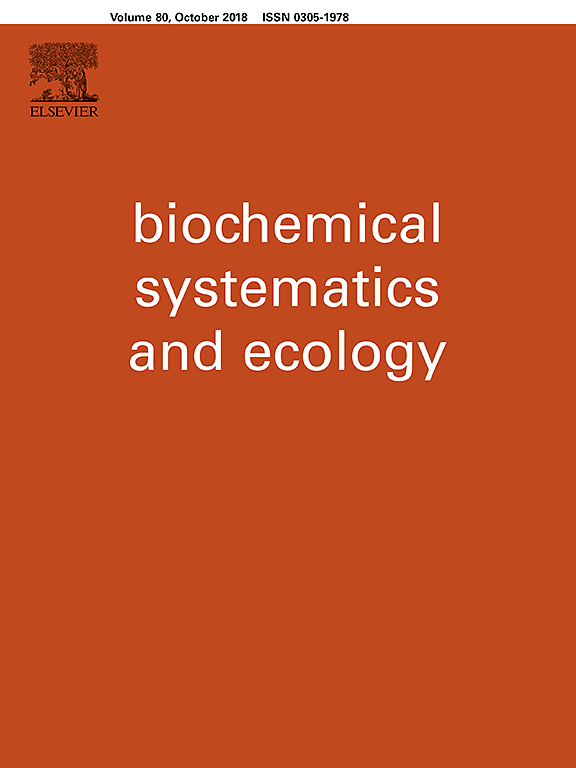Ver ítem
- xmlui.general.dspace_homeCentros e Institutos de InvestigaciónCIRN. Centro de Investigaciones de Recursos NaturalesInstituto de Recursos BiológicosArtículos científicosxmlui.ArtifactBrowser.ItemViewer.trail
- Inicio
- Centros e Institutos de Investigación
- CIRN. Centro de Investigaciones de Recursos Naturales
- Instituto de Recursos Biológicos
- Artículos científicos
- Ver ítem
New insights into the chemical biodiversity of Minthostachys mollis in Argentina
Resumen
Variations in the chemical composition of the essential oils of Minthostachys mollis Griseb. (Lamiaceae) collected in their natural habitat in Argentina were determined using GC-FID-MS analysis. Seventy five samples collected out of 40 wild plant populations in the Central and Northwestern Argentina during four years sampling, were analyzed. Principal Component Analysis was made on the chemical data showing that samples from Córdoba and San Luis belonged
[ver mas...]
Variations in the chemical composition of the essential oils of Minthostachys mollis Griseb. (Lamiaceae) collected in their natural habitat in Argentina were determined using GC-FID-MS analysis. Seventy five samples collected out of 40 wild plant populations in the Central and Northwestern Argentina during four years sampling, were analyzed. Principal Component Analysis was made on the chemical data showing that samples from Córdoba and San Luis belonged to the typical menthone – pulegone chemotype in accordance with previous reports; meanwhile samples from Tucumán, Salta and Catamarca showed the presence of different compositions, some previously unreported, mainly those detected in Tucumán province. In addition, cluster analysis was applied using Euclidean distance to measure the dissimilarity in the relative composition of samples from Tucumán, Salta and Catamarca, using Ward's method as the agglomeration technique. Five groups were retained with less than 10% of information loss: i) dihydrocarvone-carvone, ii) pulegone with absence of menthone, iii) carvacryl acetate-carvacrol, iv) limonene and v) linalool.
It is worth mentioning that the compositions of the different chemotypes remained constant throughout the four years of collection and despite the highly diverse pattern of compositions revealed in this search, the typical chemotype was not found present northwards Córdoba and San Luis provinces. This is the first report of a deep study on natural populations of peperina throughout the whole distribution area in Argentina with consecutive sampling repetitions of the same populations during several years.
[Cerrar]

Autor
van Baren, Catalina María;
Di Leo Lira, Paola Maria del Rosario;
Elechosa, Miguel Angel;
Molina, Ana Maria;
Juarez, Miguel Angel;
Martinez, Alejandro;
Perelman, Susana Beatriz;
Bandoni, Arnaldo Luis;
Fuente
Biochemical Systematics and Ecology 57 : 374-383 (December 2014)
Fecha
2014-12
Editorial
Elsevier
ISSN
0305-1978
Formato
pdf
Tipo de documento
artículo
Palabras Claves
Derechos de acceso
Restringido
 Excepto donde se diga explicitamente, este item se publica bajo la siguiente descripción: Creative Commons Attribution-NonCommercial-ShareAlike 2.5 Unported (CC BY-NC-SA 2.5)
Excepto donde se diga explicitamente, este item se publica bajo la siguiente descripción: Creative Commons Attribution-NonCommercial-ShareAlike 2.5 Unported (CC BY-NC-SA 2.5)

